This recipe is for a Neapolitan style pizza with a twist – pesto! Staying true to Authentic Italian cuisine, this delicious pesto is homemade in a pestle and mortar (or you could use a blender).
This recipe is really intended for those that already know how to make homemade pizza.
If you are new to making pizza, check out my Neapolitan Pizza School series here. You will learn everything you need to know about making pizza from scratch, including making the dough by hand.
Once you have made your dough, you can prepare the pesto to be used instead of tomato sauce. The rest of the process is exactly the same.
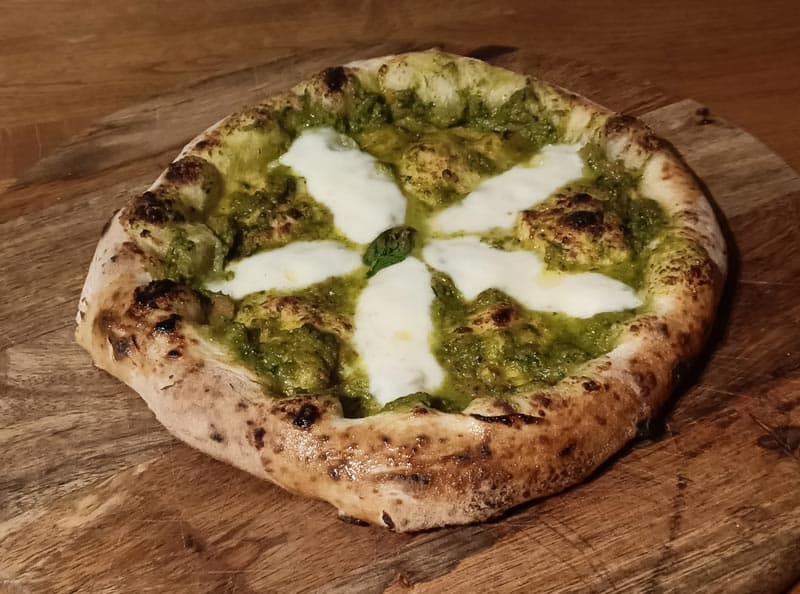
If you want to get straight to the recipe, feel free to click here to jump to recipe. Otherwise, keep on reading to learn how and why this recipe works so well!
Also, if you need to, you can jump to the Pizza School parts on making the dough using the links below:
If you are already familiar with making dough, feel free to check out my authentic Neapolitan pizza recipe here.
Read on for more detail on making the perfect pesto for pizza!
Having tried several different pesto recipes, this recipe is the best pesto for pizza that I have found. It’s a little different to a normal pesto but lends itself very well to pizza.
I have found the best pesto for pizza to be a tomato pesto. Tomatoes are not typically used in most traditional pesto recipes. Most pesto recipes use plenty of olive oil without tomatoes.
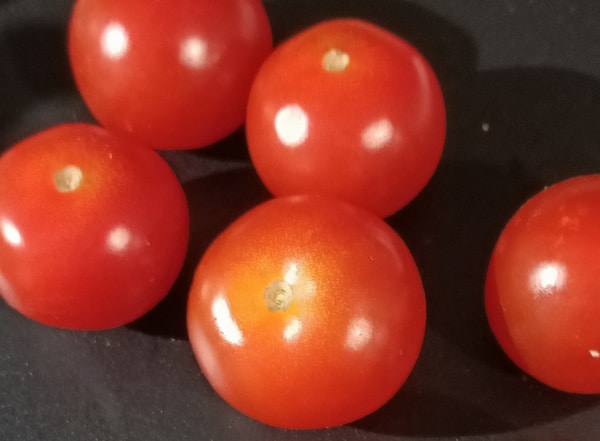
Using fresh cherry tomatoes also provides an excellent flavour to the pesto which works really well on pizza. It adds a slightly acidic taste, a little bit of sweetness, and softens the bitterness from the basil and olive oil.
Of course, you can vary the amount of tomato you use to your liking. The recipe I provide you with is a great starting point. But feel free to experiment with more or less tomatoes, or none at all.
The main reasons why adding tomatoes make the best pesto for pizza is due to their moisture content.
The moisture from the tomatoes allows us to use less olive oil. Too much oil on a pizza can lead to a soggy pizza. Besides, we can always add some more olive oil to taste once the pizza is cooked.
I recommend adding the olive oil to the pesto at the very end. This way you can add the minimum amount of oil required to achieve the desired consistency. For this recipe, we want quite a thick pesto.
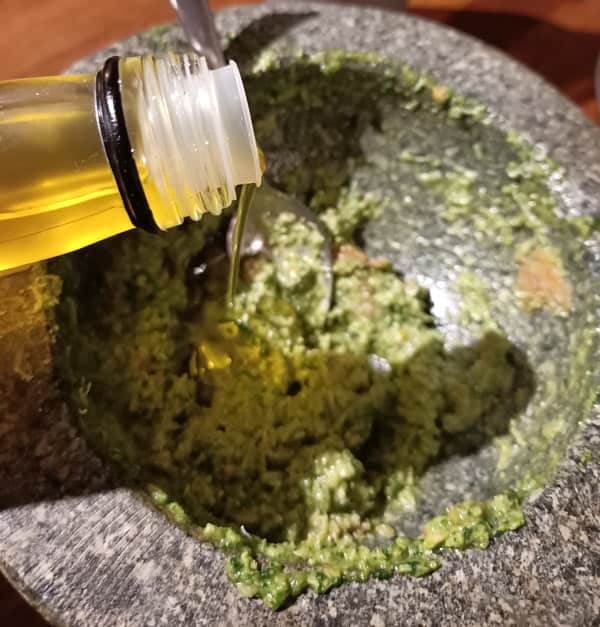
The picture below shows the finished consistency that we are looking for. It is still quite thick and chunky but thin enough to spread on the pizza.
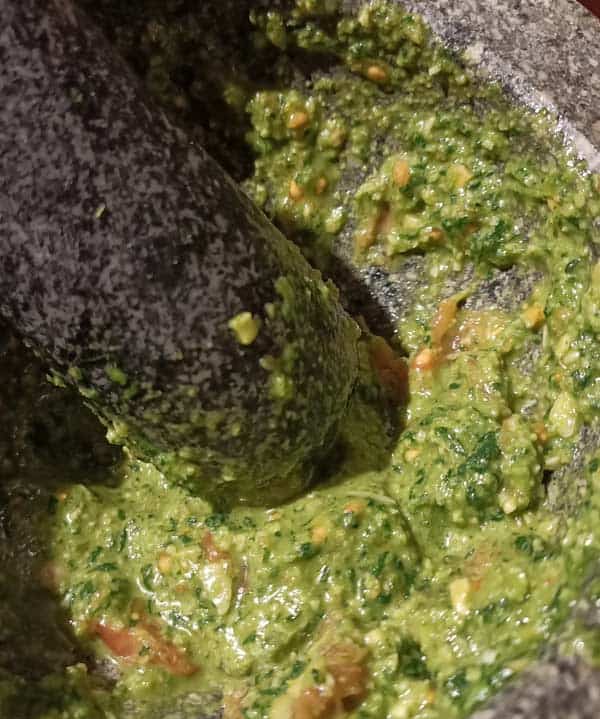
Once you have tried this thicker pesto, you can experiment with adding a little more oil or tomatoes to achieve a slightly thinner sauce if you prefer. But starting with a thick pesto reduces our chances of ending up with a soggy pizza.
Peeling cherry tomatoes can be a real pain but this technique makes it much easier. You’ll have your tomatoes ready to make the best pesto for pizza in no time!
Use a sharp knife to cut a small slit in each cherry tomato. I like to make the slit right at the top of the tomato.
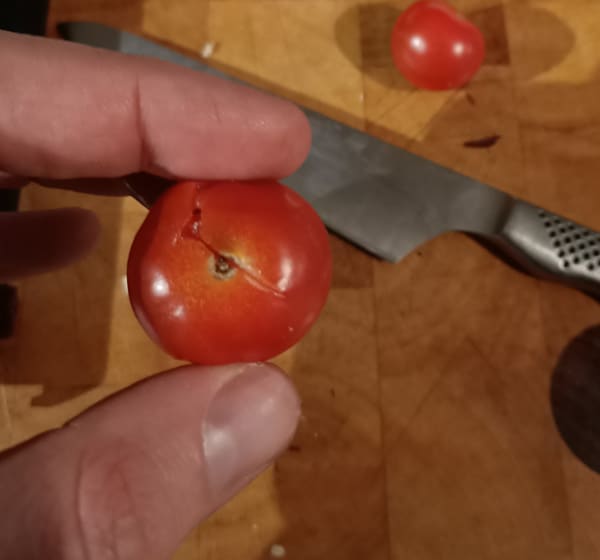
Place your cut tomatoes into a bowl and pour over boiling water to cover them. Leave them for around 60 seconds. This will soften the skin, making it easier to remove.
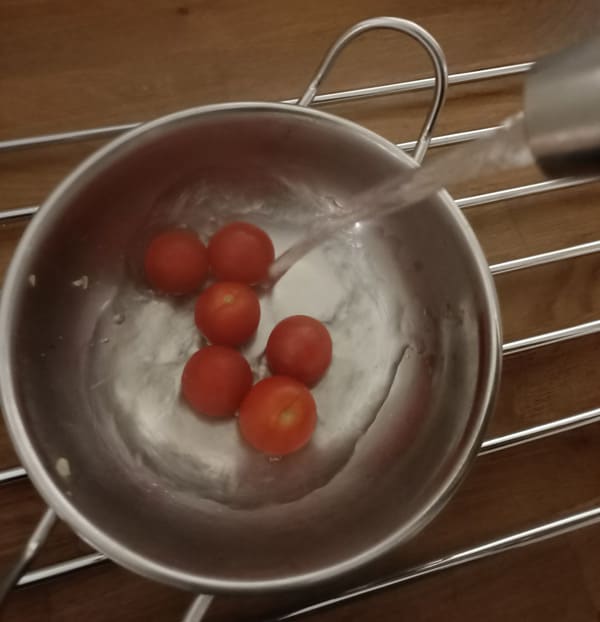
This will cool the tomatoes down, making them safe to handle. It will also stop the cooking process which is fine since we don’t need them cooked for the pesto.
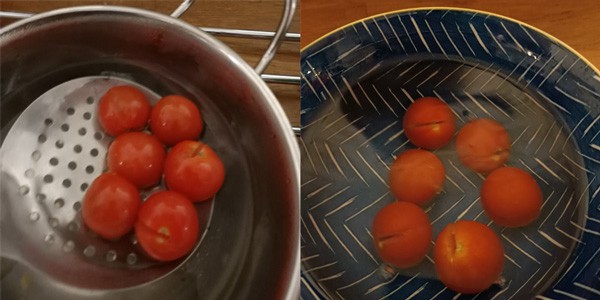
You should now find the skins very easy to remove. Simply squeeze the tomato between your finger and thumb and you should find it releases from it’s skin with ease.
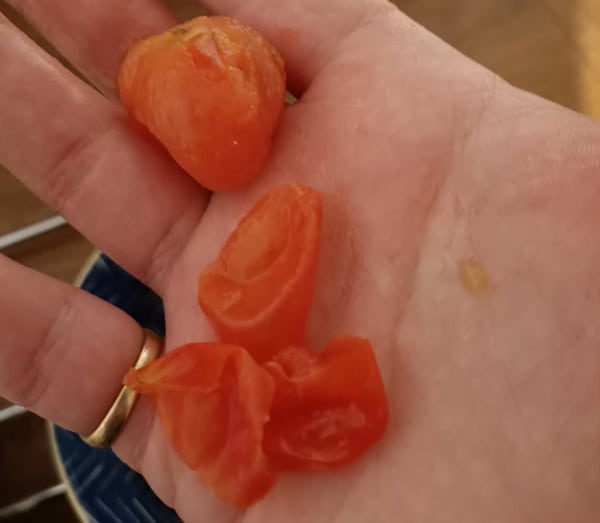
With this technique, using fresh cherry tomatoes is easy. You can now make the very best pesto for pizza without too much time or effort!
This recipe works really well as a base for pizza. Being more delicate than most pestos, and containing tomatoes, it makes an excellent option for a base sauce.
This was the reason I devised the recipe. I wanted something completely different from the regular tomato sauce.
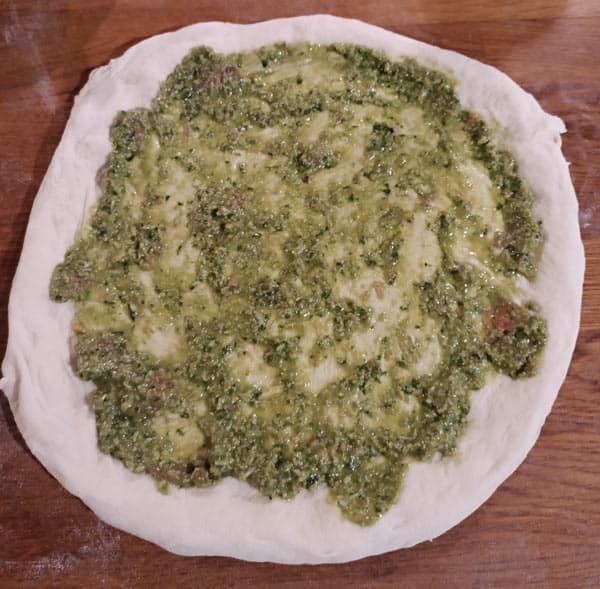
The taste doesn’t overpower the flavour of the dough at all. Also, the pesto will typically become milder as it is cooked. For this reason, you may actually find yourself adding much more pesto to your base than you initially thought.
Having said that, I still recommend starting with just a modest amount of pesto as a base (2-3 tablespoons). Make sure your pizza doesn’t turn out soggy before experimenting with adding more.
If you prefer, you could use regular tomato sauce for the base and then add some of the pesto to it. Of course, this will make the taste of pesto much milder.
But this may be more suited to kids and those that perhaps aren’t a bit fan of basil! If you do decide to use the pesto along with a tomato sauce then I would recommend reducing the amount of tomato in the pesto.
Try to make a thicker pesto which contains less moisture. You will still need to add some olive oil but be careful. As the pesto cooks, it can make the pizza soggy if it is too thin. This is especially true when you are using it on top of a tomato sauce.
Pesto goes really well with mozzarella on pizza. The milder flavour of the pesto in this recipe compliments the mozzarella nicely and doesn’t overpower it.
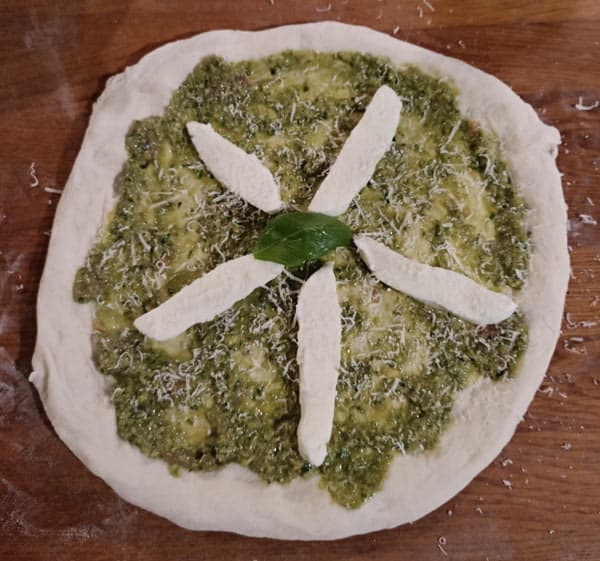
You will still need to be careful with the moisture in the mozzarella. If you are using fresh mozzarella (stored in brine) then I recommend removing as much of this moisture as possible. Check out my article here where I show you how to remove the moisture form mozzarella using kitchen paper.
Watery mozzarella leads to soggy pizza, and this is no different when using pesto. If anything, you should be more careful since there is olive oil in the pesto which won’t reduce when cooked.
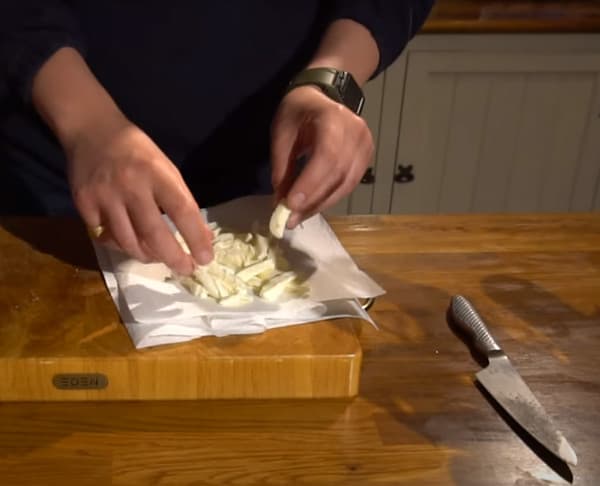
For this reason, I don’t add any olive oil to the pesto and mozzarella pizza before cooking. You can always add some once the pizza is cooked if you like.
If you are unsure, you can always use grated mozzarella. This type is dried already so you shouldn’t have any issues with moisture and sogginess.
While not strictly Neapolitan, I think this pesto pizza makes for a delicious change. And it still stays true to the Neapolitan style, with an authentic homemade pesto.
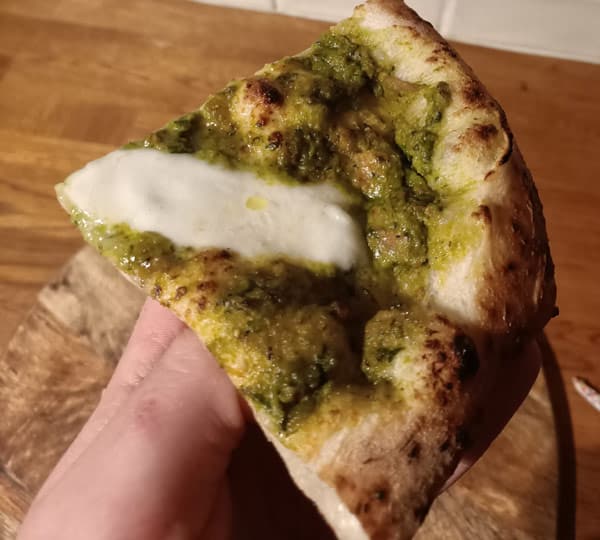
This recipe may not be to everyone’s taste but it’s definitely worth trying. You may just love it! I know I did.
Good luck with your pesto pizza!
The perfect pesto for homemade pizza
This pesto contains fresh tomatoes and less olive oil than a regular pesto, making it ideal to be used as a base sauce on your pizza.

Makes enough pesto for 4 x 10 inch pizzas.
Not all the following utensils are required but these are what I use and they tend to make the process much easier.
Any large bowl could be used for mixing the dough but I like using the metal ones since they’re lightweight, stackable, and easy to clean.
Click here to check out metal mixing bowls like the ones I have on Amazon.
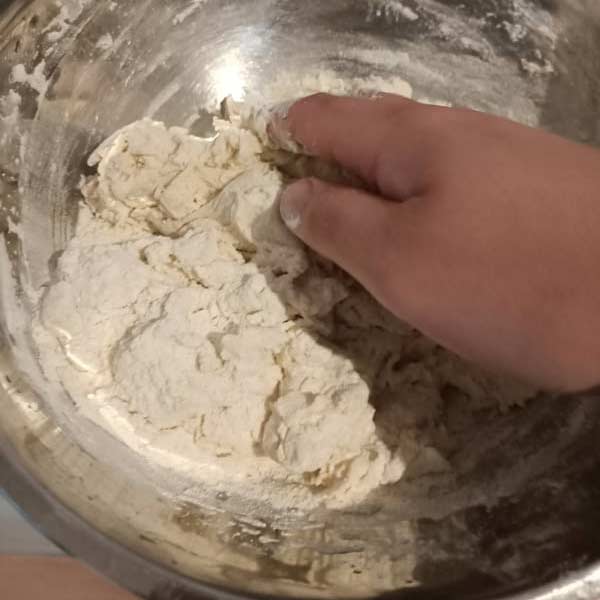
These are affordable, easy to use, and precise (accurate to 1g). I don't recommend using cups as measurements as they are inprecise.
Click here to take a look at the type of digital scales I use on Amazon.
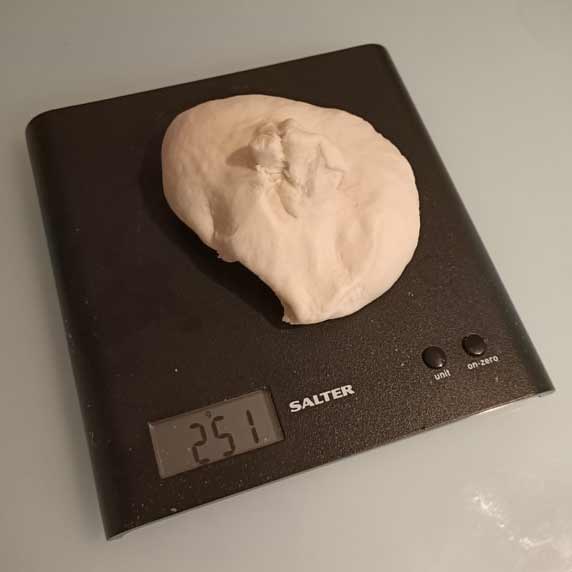
These kitchen scales are accurate to 0.01g and are perfect for measuring the tiny amounts of yeast needed for long proves.
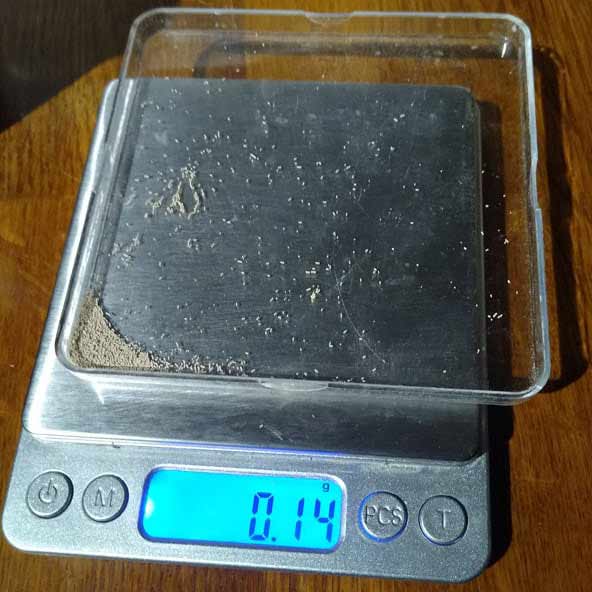
Pizza proofing boxes are an excellent investment. They are airtight and they make taking the dough out for shaping very easy.
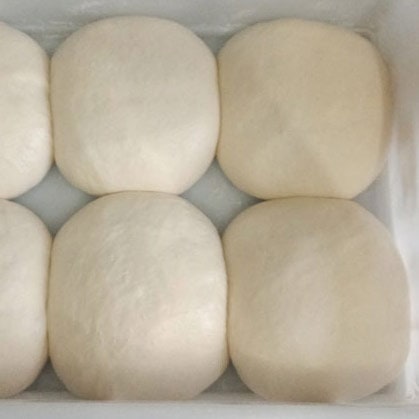
An infrared thermometer allows you to instantly check the temperature of the stone, ensuring it is within the ideal range.
Click here to check out a pizza peel similar to the one I use on Amazon.

A 12 inch peel is ideal for Neapolitan pizza and makes loading and removing your pizza from the oven really easy.
Click here to check out a pizza peel similar to the one I use on Amazon.
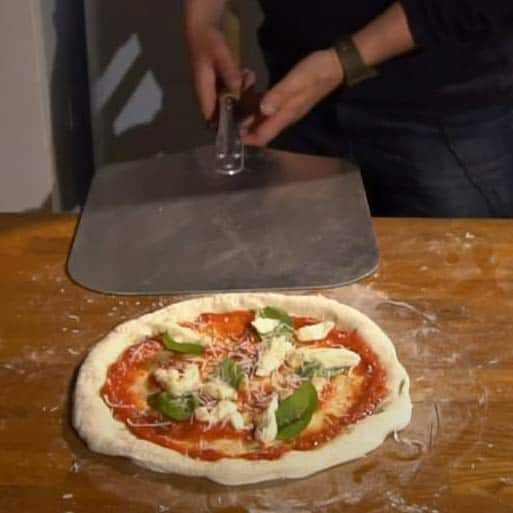
A turning peel is designed for rotating the pizza during cooking. If you're using a pizza oven it should lead to a superior and more even cook.
Click here to check out a pizza peel similar to the one I use on Amazon.

A pizza oven is guarenteed to take your pizzas to the next level. I have an Ooni Karu 16 which reaches 500C/930F and cooks pizza in as little as 60 seconds! A regular oven simply cannot match the cook of a pizza oven. I love my Ooni!

Keep reading for more detail and information on this recipe.
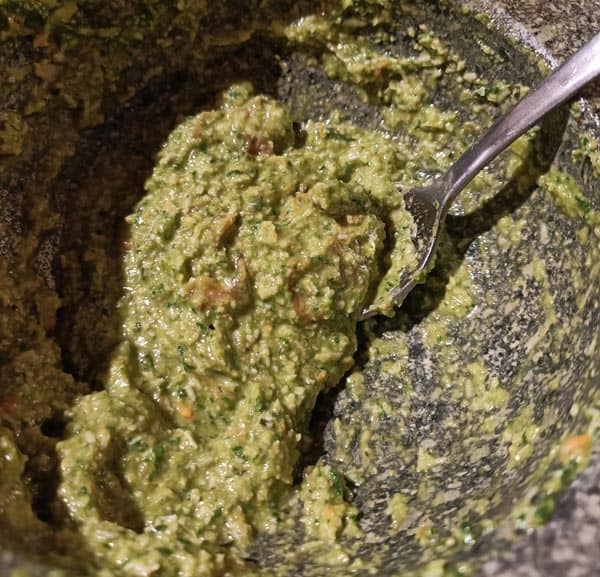

I’m Tom Rothwell and I’m super passionate about all kinds of homemade pizza! In the last few years I've been on a quest to find the perfect pizza. Now I'm sharing what I've found out with the world!

If you're interested in hiring me for your event in the UK, feel free to check out my website with the link below.
Pizza Catering
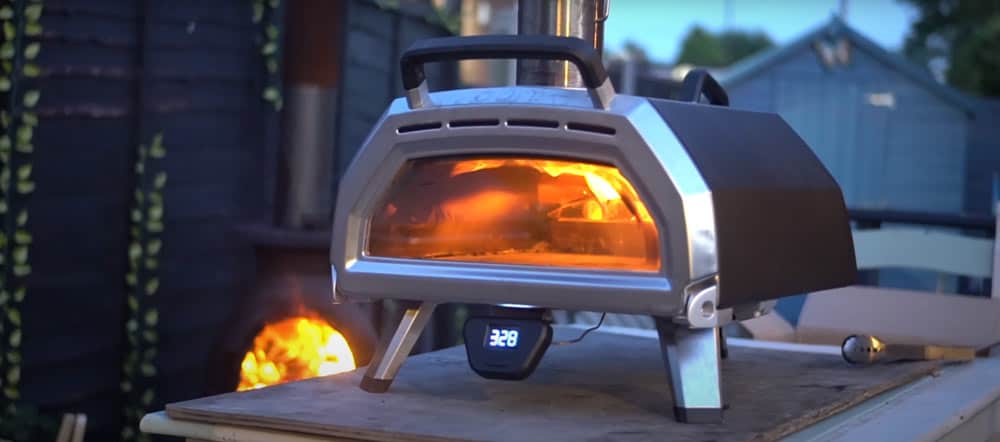
I often get asked what type of oven I use for my pizzas. Well, I use a pizza oven made by a company called Ooni.
The range of pizza ovens that Ooni offers is just brilliant. They cover all bases, and all price points. There's affordable and portable models such as the Fyra 12 Pizza Oven and then there's state-of-the-art models such as the Karu 16 Pizza Oven pictured below.
In all honesty, I would say that the oven makes a huge difference. If you're looking to make authentic Italian pizza, a pizza oven is a must.
By clicking the link below and purchasing from Ooni, you would be supporting this website. I've been using their ovens for a long time now and I wouldn't recommend them if I didn't believe in their products.
Time to make some amazing pizza!

I’m Tom Rothwell and I’m super passionate about all kinds of homemade pizza! In the last few years I've been on a quest to find the perfect pizza. Now I'm sharing what I've found out with the world!

If you're interested in hiring me for your event in the UK, feel free to check out my website with the link below.
Pizza Catering
Marvellous dough, I did use still bottled water though, my partner Domenico is Neopolitan and is a true pizza perfectionist and gets annoyed at my attempts at pizza making, though I think they are ok.
I’ve got an outdoor wood oven like yours, I have to juggle keeping fire hot at the same time preparing the pizzas while Dom sits and waits to see the results.
Well this time he remained silent and ate with enthusiasm, so I guess this recipe for dough is a winner!
Thank you for sharing your pizza recipes, I’m doing the pesto mozzerella later!
Tata from Jacqui-sunny Blackpool😎😥
Sounds like you nailed it to me! But I agree, keeping the fire going can be challenging but once you get into a good routine it comes as second nature.
I tend to get my work station and all the toppings prepared while the pizza oven is heating up. Once it’s up to temperature, I make a pizza as quickly as I can (about 60 seconds) and get it loaded.
Then once that one comes out, I get it on a chopping board and go back to top the oven up. As soon as it’s back up to temperature I quickly make the next one.
Of course you need a break to eat some as well!
I think speed is key. When you can make a pizza very quickly, you will probably find your timing issues disappear.
Keep on going, it sounds like you’re getting there! Especially if Dom is impressed!
Tata from sunny Yorkshire!